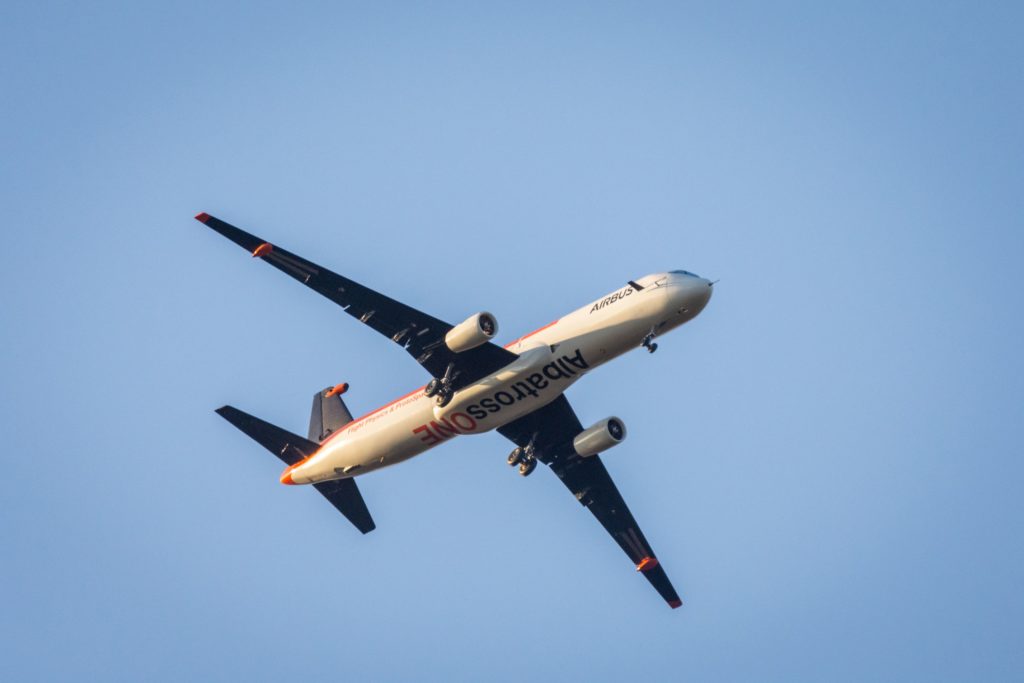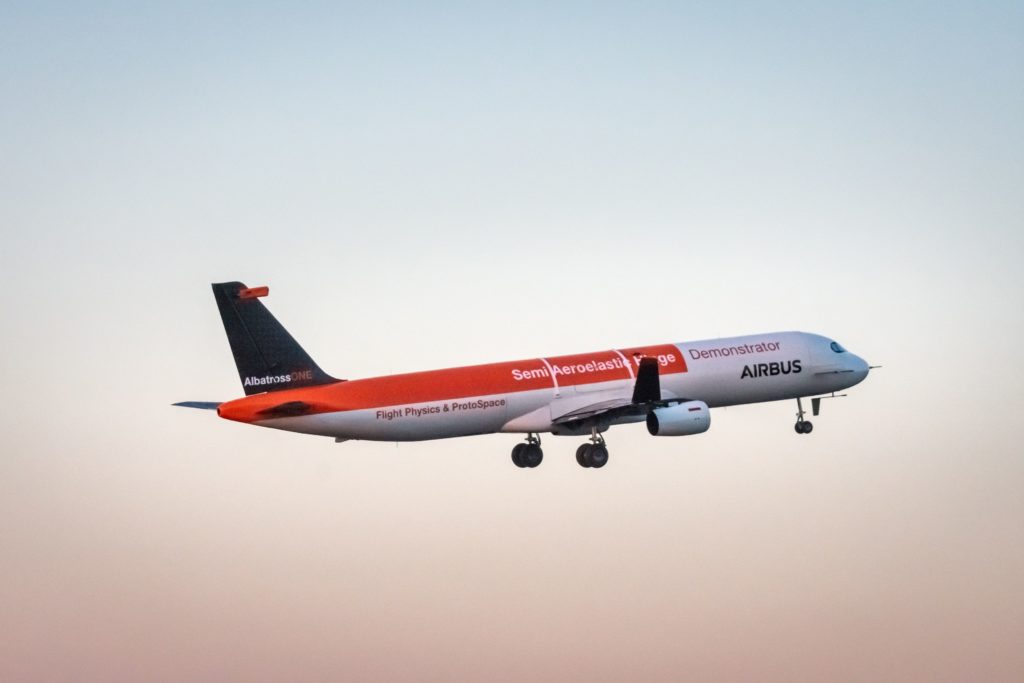At the Airbus Innovation Days last month, Airbus talked about the new concepts they were developing, including a new wing design they are testing, inspired by the Albatross. Airbus engineers have developed a scale-model aeroplane with the first in-flight, flapping wing-tips that could revolutionise aircraft wing-design.
Airbus has drawn on nature to develop its ‘semi-aeroelastic hinge’ concept to reduce drag and overall wing weight while combating the effects of turbulence and wind gusts. Known as AlbatrossOne, the remote-controlled aircraft has already taken its first flights to prove the concept and the team will now conduct further testing before the demonstrator, based on the manufacturer’s A321 plane, is scaled-up further.

While hinged wing-tips are not new – military jets employ them to allow greater storage capacity on aircraft carriers – the Airbus demonstrator is the first aircraft to trial in-flight, freely-flapping wing-tips to relieve the effects of wind gusts and turbulence. Airbus drew inspiration from nature – the albatross marine bird locks its wings at the shoulder for long-distance soaring but unlocks them when wind-gusts occur or manoeuvering is required.
The AlbatrossOne model will explore the benefits of unlockable, freely-flapping wing-tips – accounting for an up to a third of the length of the wing – to react autonomously during in-flight turbulence and lessen the load on the wing at its base, so reducing the need for heavily reinforced wing boxes.

When there is a wind gust or turbulence, the wing of a conventional aircraft transmits huge loads to the fuselage, so the base of the wing must be heavily strengthened, adding weight to the aircraft. Allowing the wing-tips to react and flex to gusts reduces the loads and allows us to make lighter and longer wings – the longer the wing, the less drag it creates up to an optimum, so there are potentially more fuel efficiencies to exploit.
The first test flights of the AlbatrossOne demonstrator, developed by Airbus engineers in Filton, were concluded in February after a 20-month development programme. It has been constructed from carbon fibre and glass fibre-reinforced polymers, as well as components from additive-layer manufacturing.
Clearly, folding wings will find different use cases for different aircraft. On the other hand, Boeing is making the 777X, which will also have folding wingtips, but when on the ground, to ensure the planes fit the bays and other airport infrastructure already available for the 777 and other widebody aircraft.
What do you think of the new concept being designed by Airbus? Do you think it will see the light of day anytime soon?


I was so disappointed to find out that that picture is of a small scaled model. I was expecting an actual a321 with new wings.
Can i find that model dimensions and research paper for adaptive wing manufacturing project
@kishan perhaps writing to the people inside Airbus would help you with that.